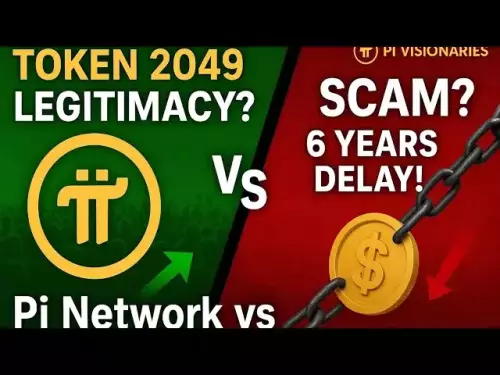-
 bitcoin
bitcoin $114779.865156 USD
2.30% -
 ethereum
ethereum $4226.519789 USD
2.39% -
 tether
tether $1.000545 USD
0.04% -
 xrp
xrp $2.890223 USD
0.92% -
 bnb
bnb $1030.029301 USD
2.95% -
 solana
solana $212.824944 USD
1.69% -
 usd-coin
usd-coin $0.999757 USD
0.01% -
 dogecoin
dogecoin $0.234961 USD
-0.27% -
 tron
tron $0.337174 USD
0.42% -
 cardano
cardano $0.804783 USD
0.09% -
 hyperliquid
hyperliquid $45.748770 USD
-2.85% -
 chainlink
chainlink $21.699170 USD
0.82% -
 ethena-usde
ethena-usde $1.001452 USD
0.08% -
 avalanche
avalanche $30.237800 USD
1.14% -
 stellar
stellar $0.372604 USD
1.52%
How do I change the order price for SOL contracts?
To change a SOL contract order price, cancel and replace the limit order or use platform-specific modify tools, especially crucial during volatile market shifts.
Sep 27, 2025 at 05:18 pm
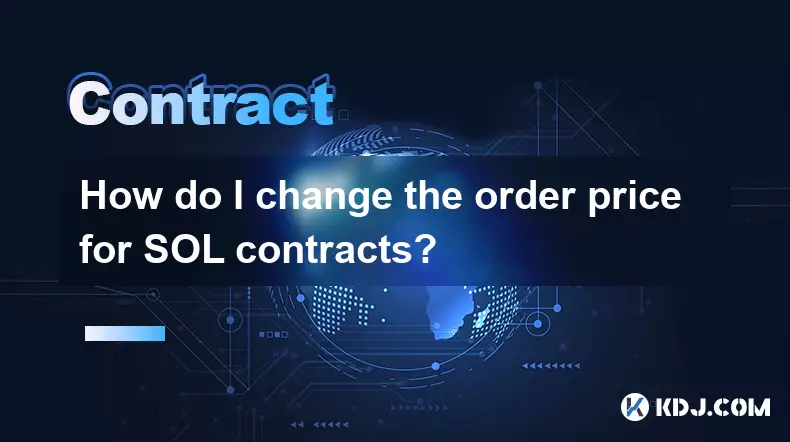
Changing the order price for SOL contracts requires understanding both the platform mechanics and real-time market behavior. Traders must act with precision, especially in volatile environments where SOL’s price can shift rapidly due to network activity or broader crypto sentiment.
Understanding Order Types and Price Adjustments
1. Market orders execute immediately at the best available price but do not allow price modification after placement.
- Limit orders let traders specify the exact price at which they are willing to buy or sell SOL contracts.
- To change the price on a limit order, you must cancel the existing order and submit a new one with the updated price.
- Some advanced trading interfaces support modify functions, allowing direct price edits without full cancellation.
- Stop-loss and take-profit orders tied to open positions may be adjusted directly through the position management panel.
Platform-Specific Procedures for Modifying Prices
1. On centralized exchanges like FTX or Bybit, access the futures or derivatives section, locate your open order, and select “Modify” or “Cancel & Replace.”
- Decentralized platforms such as Mango Markets on Solana require interaction through connected wallets like Phantom; users must manually withdraw the original order via transaction confirmation.
- TradingView-integrated brokers often provide drag-and-adjust features on chart-based orders, enabling visual price updates.
- API traders can automate price changes using REST commands to PATCH or DELETE/POST order endpoints with updated parameters.
- Mobile app users should ensure they are running the latest version to avoid interface lags that could delay price update confirmations.
Risks and Considerations When Adjusting Order Prices
1. Canceling and replacing an order removes it from the priority queue, potentially losing time-in-force advantages.
- Frequent modifications during high volatility may result in slippage, especially if liquidity is thin across order books.
- Gas fees on Solana are minimal but still apply when interacting with decentralized contract systems—batch changes reduce cost overhead.
- Misjudging price levels can lead to missed entries or premature exits, particularly when chasing momentum moves in SOL.
- Partial fills complicate adjustments; traders must verify remaining size before attempting price changes on unfilled portions.
Frequently Asked Questions
Can I change the price of a partially filled SOL futures order?Yes, but only the unfilled portion can be modified. Most platforms require cancellation of the remaining quantity, followed by a new order at the desired price.
Does modifying an order affect my trading fee tier?No, fee tiers are based on 30-day volume and account level, not individual order actions. However, excessive cancellations might impact maker rebate eligibility on certain exchanges.
Why doesn’t my order price update immediately on the order book?After modification, the new order enters the matching engine queue. Delays occur if network congestion exists or if the target price lacks sufficient counterparties.
Are there bots that automatically adjust SOL contract order prices?Yes, algorithmic trading tools like Hummingbot or exchange-native grid bots can dynamically reprice limit orders based on volatility, spreads, or technical indicators.
Disclaimer:info@kdj.com
The information provided is not trading advice. kdj.com does not assume any responsibility for any investments made based on the information provided in this article. Cryptocurrencies are highly volatile and it is highly recommended that you invest with caution after thorough research!
If you believe that the content used on this website infringes your copyright, please contact us immediately (info@kdj.com) and we will delete it promptly.
- BlockDAG, DOGE, HYPE Sponsorship: Crypto Trends Shaping 2025
- 2025-10-01 00:25:13
- Deutsche Börse and Circle: A StableCoin Adoption Powerhouse in Europe
- 2025-10-01 00:25:13
- BlockDAG's Presale Buzz: Is It the Crypto to Watch in October 2025?
- 2025-10-01 00:30:13
- Bitcoin, Crypto, and IQ: When Genius Meets Digital Gold?
- 2025-10-01 00:30:13
- Stablecoins, American Innovation, and Wallet Tokens: The Next Frontier
- 2025-10-01 00:35:12
- NBU, Coins, and Crypto in Ukraine: A New Yorker's Take
- 2025-10-01 00:45:14
Related knowledge
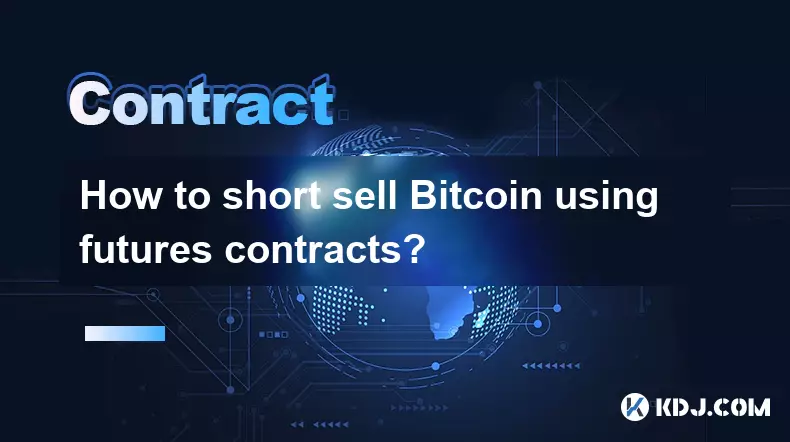
How to short sell Bitcoin using futures contracts?
Oct 01,2025 at 02:54am
Understanding the Role of Decentralized Exchanges in Crypto Trading1. Decentralized exchanges (DEXs) have become a cornerstone of the cryptocurrency e...
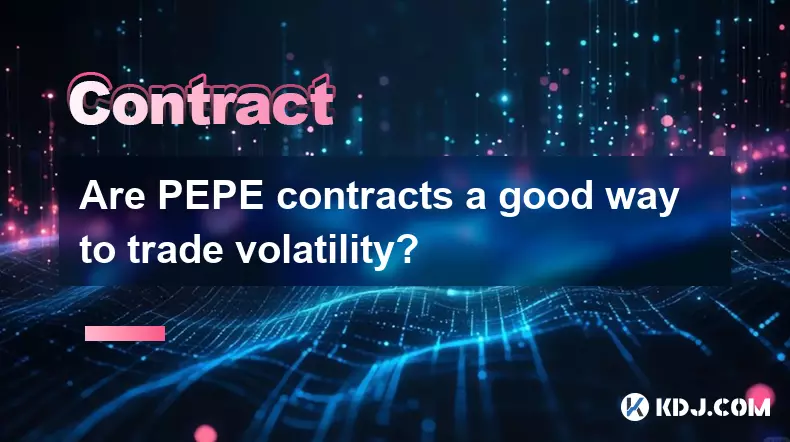
Are PEPE contracts a good way to trade volatility?
Oct 01,2025 at 04:18am
Understanding PEPE Contracts in the Cryptocurrency Market1. PEPE contracts, derived from the broader meme coin movement, have gained attention due to ...
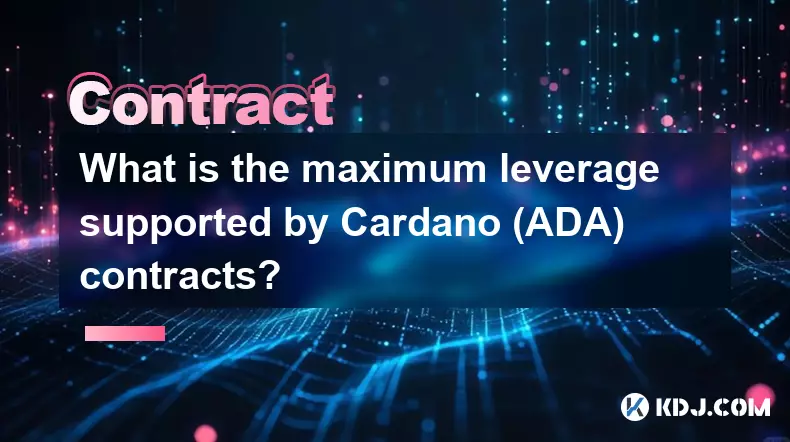
What is the maximum leverage supported by Cardano (ADA) contracts?
Sep 30,2025 at 03:37am
Understanding Leverage in ADA Derivatives Trading1. Leverage in cryptocurrency futures and perpetual contracts allows traders to control larger positi...

How do I use the scheduled order feature in Cardano (ADA) contracts?
Sep 28,2025 at 10:18pm
Understanding Scheduled Orders in Cardano Smart ContractsCardano operates on a proof-of-stakes consensus mechanism and uses the Plutus scripting langu...

Can I modify the leverage of Cardano (ADA) contracts after opening a position?
Sep 30,2025 at 08:19am
Understanding Leverage in Cardano (ADA) Futures Trading1. Leverage allows traders to control larger positions using a smaller amount of capital. In th...
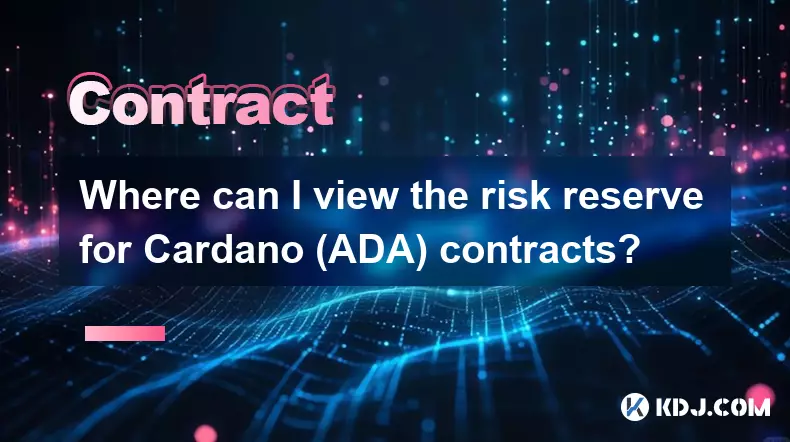
Where can I view the risk reserve for Cardano (ADA) contracts?
Sep 29,2025 at 09:19pm
Risk Reserve Overview in Cardano (ADA) Ecosystem1. The concept of a risk reserve within the Cardano blockchain does not align with traditional central...

How to short sell Bitcoin using futures contracts?
Oct 01,2025 at 02:54am
Understanding the Role of Decentralized Exchanges in Crypto Trading1. Decentralized exchanges (DEXs) have become a cornerstone of the cryptocurrency e...

Are PEPE contracts a good way to trade volatility?
Oct 01,2025 at 04:18am
Understanding PEPE Contracts in the Cryptocurrency Market1. PEPE contracts, derived from the broader meme coin movement, have gained attention due to ...

What is the maximum leverage supported by Cardano (ADA) contracts?
Sep 30,2025 at 03:37am
Understanding Leverage in ADA Derivatives Trading1. Leverage in cryptocurrency futures and perpetual contracts allows traders to control larger positi...

How do I use the scheduled order feature in Cardano (ADA) contracts?
Sep 28,2025 at 10:18pm
Understanding Scheduled Orders in Cardano Smart ContractsCardano operates on a proof-of-stakes consensus mechanism and uses the Plutus scripting langu...

Can I modify the leverage of Cardano (ADA) contracts after opening a position?
Sep 30,2025 at 08:19am
Understanding Leverage in Cardano (ADA) Futures Trading1. Leverage allows traders to control larger positions using a smaller amount of capital. In th...

Where can I view the risk reserve for Cardano (ADA) contracts?
Sep 29,2025 at 09:19pm
Risk Reserve Overview in Cardano (ADA) Ecosystem1. The concept of a risk reserve within the Cardano blockchain does not align with traditional central...
See all articles





















